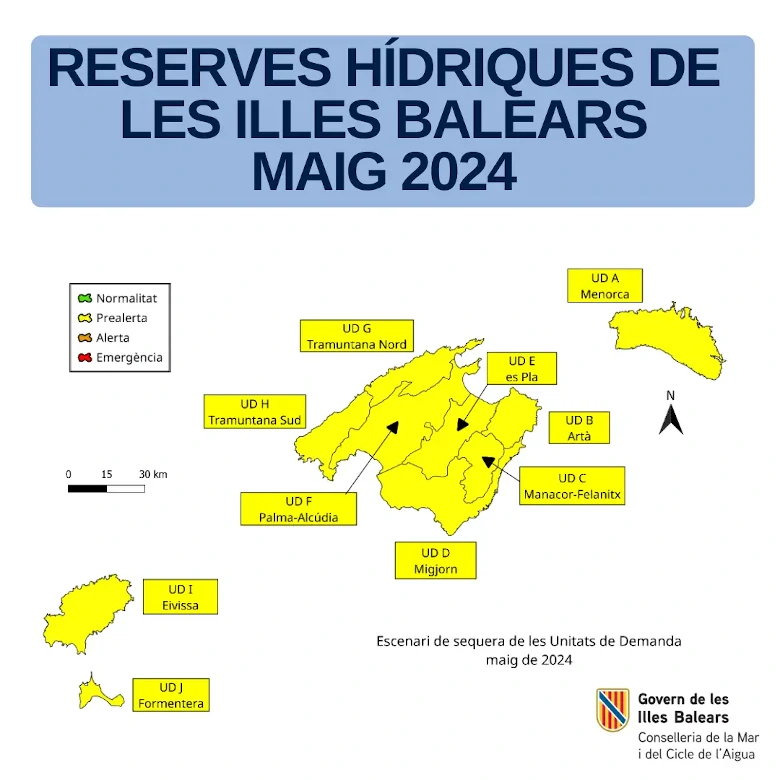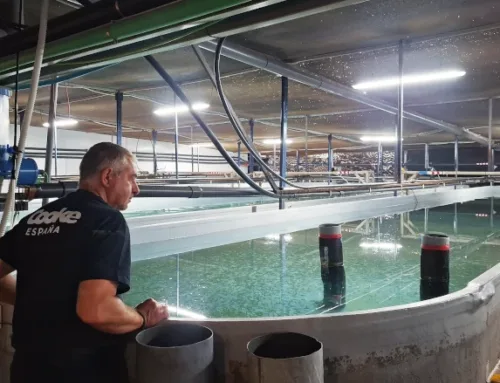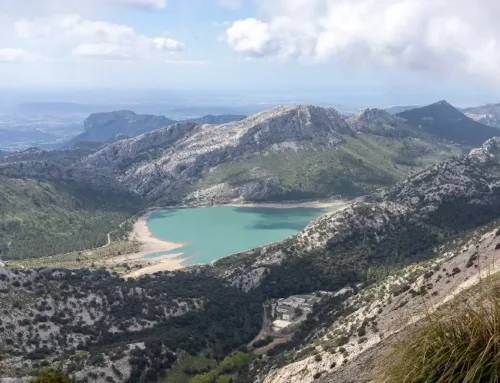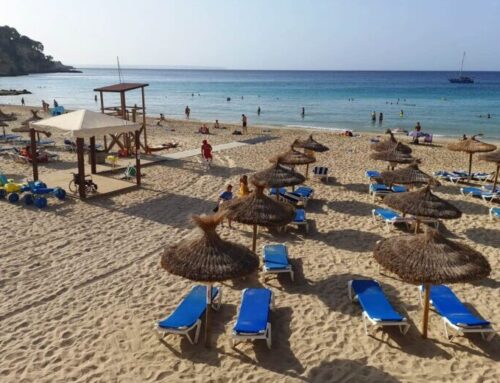The water reserves in the Balearic Islands experienced a 7 percent decrease during the past month of May compared to the same period in 2023, bringing them to 52% of their capacity. Additionally, these figures represent a 1 percent drop compared to April of this year.
The Government of the Balearic Islands indicates that 100% of the archipelago’s territory remains in a pre-alert situation with no short-term change expected. This concerning scenario underscores the need for continuous monitoring and prudent management of water resources, according to the Balearic Executive.

In terms of the index’s evolution, eight out of ten Demand Units (UD) have recorded a decrease in their reserves: Artà, Manacor-Felanitx, es Pla, Palma-Alcúdia, Tramuntana Nord, Tramuntana Sud, Eivissa, and Formentera. Menorca has remained stable, while the Migjorn UD has experienced an increase in its reserves. Regarding the percentage of reserves by island, Mallorca has dropped from 55% to 53%, Menorca from 52% to 51%, and Eivissa from 37% to 36%.
A dry and warm month of May
According to the data from the State Meteorological Agency (AEMET), May was dry in terms of precipitation, recording an average of 18.2 l/m², well below the historical average of 31.9 l/m². Breaking it down by islands, Menorca had a normal month with 22.4 l/m² compared to its historical average of 26.3 l/m². In Mallorca, rainfall was scarce, with 20.1 l/m² compared to the historical 34.4 l/m². Eivissa and Formentera experienced an extremely dry month, with only 2.2 l/m² and 2.0 l/m² respectively, compared to their historical averages of 23.6 l/m² and 17.1 l/m².
The year-over-year analysis of precipitation shows that the Balearic Islands have reached 79% of the expected average, with Mallorca at 80%, Menorca at 80%, and the Pitiüses at 65%.
Regarding temperatures, May has been warm, with an average temperature of 18.6°C, which is 0.5°C above the usual average.







Leave A Comment